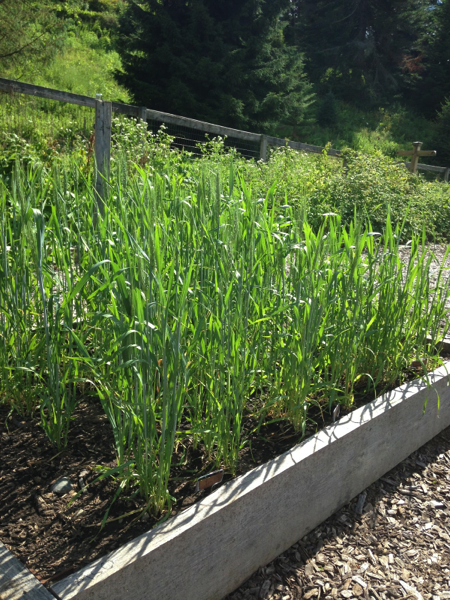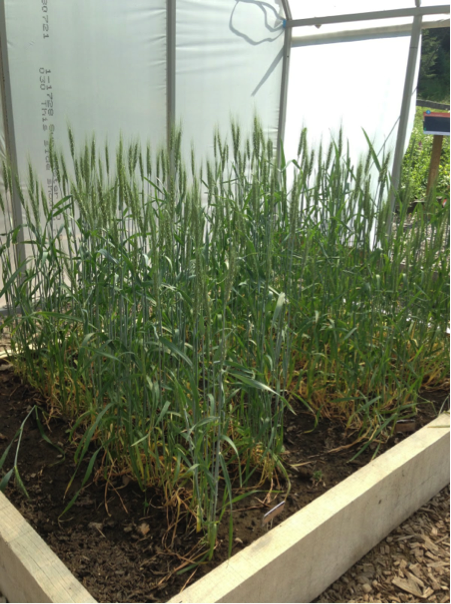You Were Bread For This
Friday June 24th, 2016
As the summer continues, we are able to observe more differences between the plants inside and outside the high tunnel. We have three varieties of hard red spring wheat, Tom, Glenn, and Red Fife, some of which started to produce heads. Hard red spring wheat is planted in the spring and harvested in late summer or early fall. Different varieties of wheat are bred for different breads and dough (pun intended). Hard red spring wheat typically has a high protein content, making it good flour for baking breads and rolls. Different varieties can also be bred for other strengths, such as resistance to disease. The Tom variety is known for average yields and resistance to some fungal diseases, whereas the Glenn variety is known for high yields and early maturation. Red Fife is an Heirloom variety and was commonly used during the end of the 19th century into the 20th because of its’ adaptation to diverse growing conditions across Canada.
One might notice in the high tunnel, the three wheat varieties are all producing heads, and a few plants have started to flower. Though the plants inside are maturing at a faster rate, the wheat outside looks more lush and healthier overall. Plants that flower too early typically are stressed. For wheat, early flower maturation can even result in an overall reduction in yield.


In addition to the differences in the wheat, it is clear that some of the perennials in the high tunnel are suffering, unlike those outside. The beardtongue (Penstemon) outside the tunnel has more flowers and leaves than those inside. Both the beardtongue (Penstemon) and bee balm (Monarda) outside the tunnel are generally more lush and healthy than those indoors.
To assure that a similar amount of water is delivered to plants inside and outside, we match rainfall in the tunnel the morning after rain. To prevent the plants from completely drying out, if there is no rainfall, we measure the soil moisture in the food crop beds and water a pre-determined amount if the sensor reads below a certain threshold. The perennial plants are given supplemental water only if they show two consecutive days of morning wilting. Watering the correct amount is made easy with the use of a calculation and a water meter attached directly to the hose. By watering in this way we can reduce the variables effecting plant growth and allow temperatures (predicted for 2050) to have a more of an impact on our observations.
Please stop by the Climate Change Garden any time!
Written by Jessica Barbini (2016 Cornell Botanic Gardens Intern)









